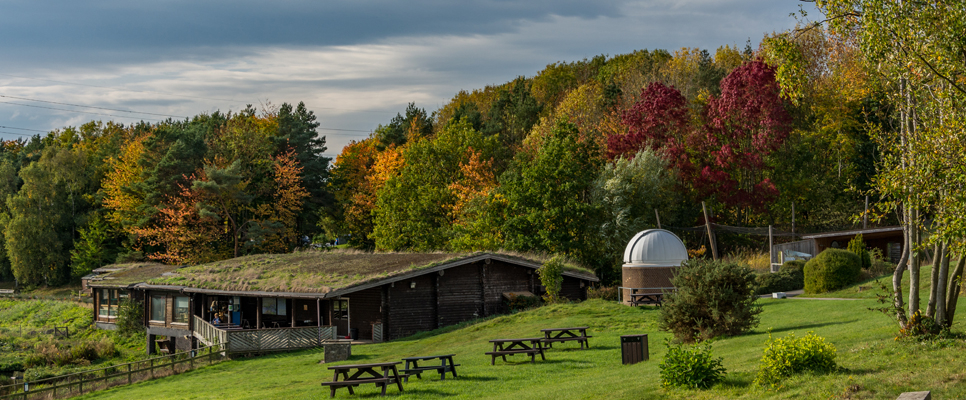The art in autumn leaves
Autumn is the time of year we see a dramatic change of colour within nature. But the science behind it is really quite clever...

Autumn. It’s the time of the year when dark nights draw in, wellies come out and shops line with auburn trinkets and seasonal fare. Yet of all autumn traditions, possibly the most spectacular is the changing colour of the autumn leaves.
Nature whisks it’s paintbrush across the canopies and like an art historian restoring an old master’s painting, it peels back the layers of green paint to reveal a myriad of colour: sometimes even splashing completely new colours across the scenery for fleeting moments, before the leaves fall and the picture changes once again.
As we admire the autumnal hues emerging in the trees at Washington Wetland Centre, it can be interesting to explore how nature actually changes its colours.

Just like the colourful pigments on an artist’s palette, we can attribute many of the colour changes we witness during autumn to changes in leaf pigments. In plants, pigments are the chemicals in leaves that are responsible for capturing visible light energy. Visible light is the light we can see with the human eye and it is composed of many different wavelengths of light, each with an associated colour. In plants, leaves use sunlight absorbed by pigments to convert carbon dioxide and water into sugars; a source of energy, in a process known as photosynthesis. Any wavelengths of visible light that are not absorbed by plant pigments remain for our eyes to perceive as colour.
During the year, plants work tirelessly to continuously replenish their store of the pigment chlorophyll (the primary light-harvesting pigment) in their cells. Chlorophyll absorbs red and blue wavelengths of visible light, leaving the unabsorbed green wavelengths for us to see as colour; hence the lush greenery we see during the spring and summer months of the year. But, as the autumn months roll in, the pigments in the leaves of trees begin to change in preparation for winter.
Like many of the British animals that go through phases of inactivity during winter, in autumn, plants also start preparing to go into a phase of dormancy. Unlike humans, where this may involve taking a nap, dormancy in trees involves the shedding of leaves. Not only does this allow them to save resources during winter, such as water and energy, but it also streamlines their canopies, allowing the winds and gales of the winter season to pass through their boughs easily.
Having spent all year pumping precious time, energy and nutrients into the growth of their leaves, autumn trees don’t let their leaves go easily. Instead, they race to break down and re-absorb the sugars and nutrients in their leaves before they fall, a process that results in the dramatic and spectacular sequence of colour changes that play out on the leaves of autumn trees.

When the light levels change and temperature drops, this signals the start of preparation for the winter dormancy, beginning with halting the production of chlorophyll. Now instead of maintaining their outward appearance of green, a whole different array of hidden oranges and yellows is revealed. While these emerging colours may seem novel, new and unique to the autumn months, the pigment responsible for the striking displays of yellow and orange leaves on autumn trees is actually present all year-round, taking the centre stage only when chlorophyll production has ceased. The pigment behind the sunset oranges and yellows is called carotene. Known as an ‘accessory pigment’, carotene is chlorophyll’s lesser known co-worker and works to extend the range of visible light that can be harvested by plants by absorbing additional blue-green wavelengths of light.

It’s not only the hidden hue’s of carotene that nature reveals with the turn of the seasons. Depending on the weather, autumn trees can also produce a whole new colour to splash across their leaves, a colour only made in autumn. This is the red-purple pigment, anthocyanin. Although it’s role is not fully understood, it is chiefly thought to protect the leaves against harsh weather conditions. For example, it is thought that a combination of dry spells and warm temperatures, resulting in a build-up of sugar in the leaves of trees, may trigger anthocyanin production. Once produced, it’s role is to assist in the absorption of sugars from the leaves by the tree before their winter dormancy ensues.
Here at Washington Wetland Centre, there's a fantastic array of these fiery oranges, vibrant yellows and purples thrown in for good measure. Next time you see them, you might just have a greater appreciation for the work that trees put into this autumn work of art!
Blog post written by Kate Ferguson



